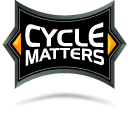
We are still waiting for that warm day we usually get in the middle of winter here in the Mid West.Normally we get a warm day every three weeks or so. This is the kind of day we can take out our scoots for a ride. This winter we had some days that were warmer than usual but they came after a snow storm and they all were rain days. The streets had salt and other crap they drop in order to melt the snow and ice. So no riding so far this winter.
While we are still waiting for that day to come, it is a good time for us to talk about the saftey of our motorcycle helmets. DOT certified helmets should only be worn if you are thinking of wearing one.
Here is an article worth reading from " Cycle Matters" web site.
To help protect the lives of motorcycle riders, the U.S. Department of Transportation (DOT) requires that all motorcycle helmets sold in the United States meet Federal Motor Vehicle Safety Standard (FMVSS) 218.
This standard defines minimum levels of performance that helmets must meet to protect the head and brain in the event of a crash. Because helmets add such a critical margin of safety for motorcycle riders, many States now have laws requiring use of helmets that meet FMVSS 218 requirements.
Some motorcycle riders are violating these State laws by wearing unsafe helmets that do not meet FMVSS 218. Most of these helmets are sold as novelty items and circumvent FMVSS 218’s requirements.
In some cases, some motorcyclists purchase these helmets in the mistaken belief that they offer protection. However, many people who wear these novelty helmets know that they are unsafe – but wear them anyway.
The following explains how to identify safe helmets as well as how to distinguish unsafe helmets from those that meet the Federal safety standard.
Here is what to check for: Thick inner linerHelmets meeting the minimum Federal safety standard have an inner liner usually about one-inch thick of firm polystyrene foam. Sometimes the inner liner will not be visible, but you should still be able to feel its thickness. Unsafe helmets normally contain only soft foam padding or a bare plastic shell with no padding at all.
Sturdy chin strap and rivets: Helmets meeting the DOT safety standard have sturdy chinstraps with solid rivets.
Weight of helmet: Depending on design, unsafe helmets weigh only one pound or less. Helmets meeting FMVSS 218 generally weigh about three pounds. Become familiar with the weight of helmets that comply with the Federal safety standard. These helmets provide a more substantial feel.
Design/style of helmet: The DOT safety standard does not allow anything to extend further than two-tenths of an inch from the surface of a helmet. For example, while visor fasteners are allowed, a spike or other protruding decorations indicate an unsafe helmet.
A design such as the German Army style or skullcap style may be a clue to an unsafe helmet. Unsafe helmets are noticeably smaller in diameter and thinner than ones meeting the DOT standard. However, some German Army style helmet may meet Federal requirements.
You’ll need to check for weight, thickness, sturdy chinstraps, as well as the “DOT” and manufacturer’s labels to make sure the helmet meets the Federal safety standard. Familiarize yourself with brand names and designs of helmets that comply with DOT requirements. For example, a full-face design is a good indicator of a safe helmet. To date, we have never seen a full-face design novelty helmet.
DOT sticker: Helmets that meet FMVSS 218 must have a sticker on the outside back of the helmet with the letters “DOT,” which certifies that the helmet meets or exceeds FMVSS 218. It is important to note that some novelty helmet sellers provide DOT stickers separately for motorcyclists to place on non-complying helmets. In this case, the DOT sticker is invalid and does not certify compliance.
Snell or ANSI label: In addition to the DOT sticker, labels located inside the helmet showing that a helmet meets the standards of private, non-profit organizations such as Snell or the American National Standards Institute (ANSI) are good indicators that the helmet also meets the Federal safety standard. To date, we have never seen a novelty helmet that has a phony DOT sticker in addition to a phony Snell or ANSI label.
Manufacturer’s labeling: Manufacturers are required under FMVSS 218 to place a label on or inside the helmet stating the manufacturer’s name, model, size, month and year of manufacture, construction materials, and owner’s information. A helmet that does not meet the Federal safety standard usually does not have such labeling.
A DOT sticker on the back of the helmet and proper inside labeling do not necessarily indicate that a helmet meets all DOT requirements. Many helmets have counterfeit DOT stickers and a limited few also have manufacturer’s labeling. But the design and weight of a helmet, thickness of the inner liner, and the quality of the chin strap and rivets are extra clues to help distinguish safe helmets from non-complying ones.
Source

Daily Photo
The Meaning Of The Day: Bagger - A motorcycle equipped with saddlebags and other touring amenities.
Now You Know, Biker Joe







No comments:
Post a Comment